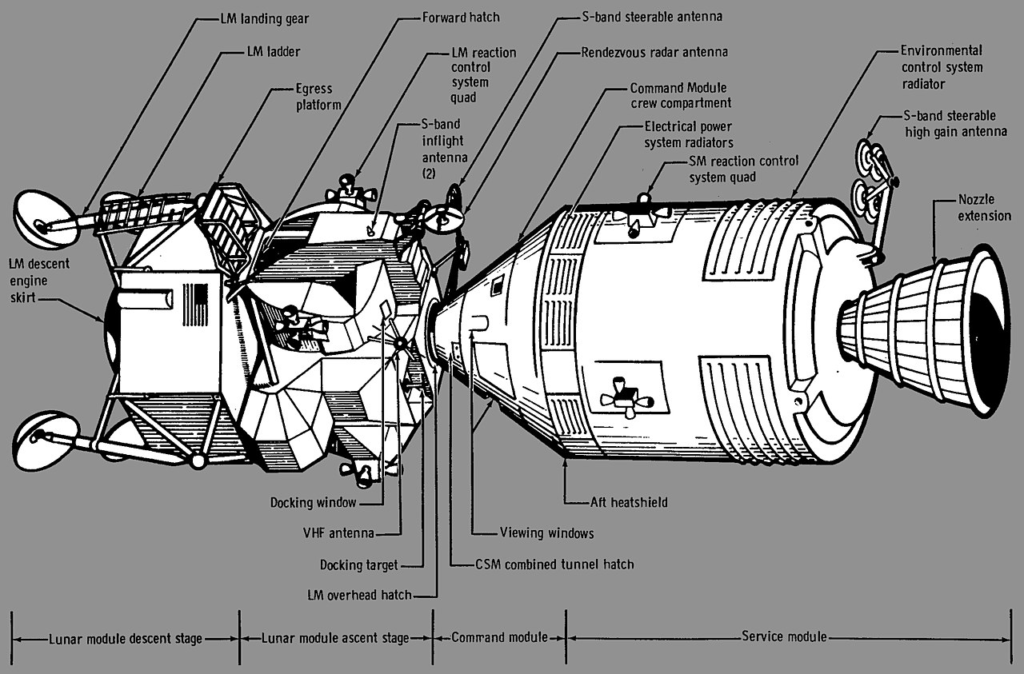
Apollo 13
Apollo 13: The First Digital Twin?
By: Destiny Dickerson
In the world of modern technology, a digital twin refers to a virtual model that mimics a real-world object or system, enabling engineers to monitor, simulate, and predict its performance in real-time. Although digital twins are now associated with industries such as aerospace, manufacturing, and smart cities, the seeds of the concept were sown decades ago. One of the earliest and most dramatic examples of a digital twin in action may have occurred during the Apollo 13 mission.
What Is a Digital Twin?
A digital twin is a dynamic, continuously updated digital replica of a physical system. With the advancement of the Internet of Things (IoT), artificial intelligence (AI), and big data analytics, digital twins have become essential for predicting failures, optimizing performance, and simulating future scenarios. The formal concept of a digital twin was introduced by Dr. Michael Grieves in 2002, but its practical origins can be traced back to NASA’s operations during the Apollo program.
The Apollo 13 Mission: A Crisis Demanding Innovation
Apollo 13 was intended to be the third crewed Moon landing. However, an oxygen tank explosion 56 hours into the mission severely damaged the spacecraft. With limited resources, the mission’s objective shifted to bringing astronauts Jim Lovell, Jack Swigert, and Fred Haise home safely.
NASA engineers faced the unprecedented challenge of solving complex technical problems without being able to access the spacecraft physically. To do this, Mission Control created and relied upon a real-time mirrored model of Apollo 13, using simulations to predict outcomes and test solutions. This mirrored approach closely resembles what is now called a digital twin.
How Apollo 13 Functioned Like a Digital Twin
Real-Time Monitoring
NASA used spacecraft simulators on the ground that were fed with telemetry data from Apollo 13. This allowed Mission Control to track oxygen levels, battery status, system integrity, and the spacecraft’s trajectory in real-time. These simulators functioned as a “ground-based twin” of the spacecraft.
Simulation and Problem Solving
Engineers in Mission Control used these simulators to replicate the damaged conditions of Apollo 13. They tested and developed procedures, such as how to restart the command module with minimal power consumption, before relaying them to the crew.
Testing Emergency Procedures
One notable example involved the carbon dioxide crisis. The spacecraft’s carbon dioxide filters became saturated, and engineers on Earth had to design a workaround using materials available to the astronauts, such as plastic bags, duct tape, and cardboard. The solution was tested first in simulations before being communicated to the crew.
Predictive Analysis
The simulators were used to run predictive models of Apollo 13’s trajectory to ensure it would safely re-enter Earth’s atmosphere. This predictive analysis relied on live spacecraft data, a core characteristic of what is now known as a digital twin system.
Digital Twin or Advanced Simulation?
While today’s digital twins incorporate cloud computing, AI, and real-time visualization, the fundamental principles — using a virtual model informed by real-time data to guide decisions — were already present during the Apollo 13 mission. Dr. Michael Grieves has noted that the Apollo missions, notably Apollo 13, exemplified early digital twin logic even before the term existed.
NASA’s approach during Apollo 13 demonstrated how building and interacting with virtual counterparts could save lives, setting a precedent for the advanced digital twin technology we use today.
Legacy of Apollo 13’s Digital Twin Approach
In the decades following Apollo 13, NASA formalized the use of digital twins for managing spacecraft health and planning missions. The agency continues to develop sophisticated digital twins for projects like the Artemis program and Mars exploration missions. The principles demonstrated during Apollo 13 remain foundational in the evolution of digital twin technology.
Sources
-
NASA. (1970). Apollo 13 Mission Report. Retrieved from https://www.hq.nasa.gov/alsj/a13/A13_MissionReport.pdf
-
Grieves, M. (2002). Digital Twin: Manufacturing Excellence through Virtual Factory Replication. University of Michigan.
-
Kranz, G. (2000). Failure Is Not an Option: Mission Control from Mercury to Apollo 13 and Beyond. Simon & Schuster.
-
Siemens Digital Industries Software. (2020). Apollo 13 and the Birth of the Digital Twin. Retrieved from https://blogs.sw.siemens.com/thought-leadership/2020/04/10/apollo-13-and-the-birth-of-the-digital-twin/
-
IBM.. (n.d.). What is a Digital Twin?. Retrieved from https://www.ibm.com/topics/what-is-a-digital-twin
-
Popular Science. (2010). Apollo 13’s Terrifying Journey Home, 40 Years Later. Retrieved from https://www.popsci.com/technology/article/2010-04/apollo-13s-terrifying-journey-home-40-years-later/
-
Photo by Siemens VikramD. (2020, April 14). Apollo 13: The First Digital Twin. Simcenter. https://blogs.sw.siemens.com/simcenter/apollo-13-the-first-digital-twin/